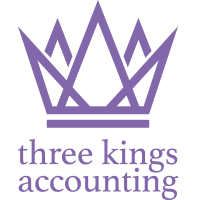National insurance contributions (NIC) are payable by employed earners and their employers as well as self-employed earners. It is also possible to make voluntary contributions. Payment of NIC qualifies the payee to receive contributory state benefits, such as the state retirement pension or jobseeker’s allowance.
National insurance is often overlooked yet it is the largest source of government revenue after income tax. We highlight below the areas you need to consider and identify some of the potential problems. Please contact us for further specific advice.
Employed individuals – Class 1 NICs
Employees between 16 and state pension age are liable to pay Class 1 primary NICs on their earnings. For 2025/26 employee contributions are only due when earnings exceed a ‘primary threshold’ of £242 per week (£12,570 per annum). The amount payable is 8% of the earnings above £242 per week up to earnings of £967 per week (£50,270 per annum), known as the Upper Earnings Limit (UEL). In addition, there is a further 2% charge on weekly earnings above the UEL.
A further contribution is due from the employer known as Class 1 secondary. Secondary contributions are due from the employer of 15% of earnings above the ‘secondary threshold’ of £96 per week for 2025/26 (£5,000 per annum). There is no upper limit on the employer’s payments.
Employer NICs for the under 21s and apprentices under 25
The rate of employer NICs for those under the age of 21 and apprentices under 25 is 0% for earnings up to the Upper Secondary Threshold (UST) in a pay period. Employer NICs at 15% will be due on earnings above the UST. The UST is set at the same amount as the UEL, which is the threshold at which employees’ NICs fall from 8% to 2%. The UST is £967 for 2025/26 (£50,270 per annum).
Employer NICs for Veterans
Civilian employers of qualifying veterans are to be given relief from employer NICs up to the level of the UST for the first year of civilian employment. A person qualifies as a veteran if they have served at least one day in the regular armed forces. This includes anyone who has completed at least one day of basic training. This measure applies until 5 April 2026.
Employment Allowance
The Employment Allowance is available to many employers and can be offset against their employer Class 1 NICs liability. The amount of the Employment Allowance is a maximum of £10,500 for 2025/26. The allowance is limited to the employer Class 1 NICs liability if that is less than the Employment Allowance.
Companies, where the director is the sole employee earning above the secondary threshold, are unable to claim the Employment Allowance. Previously the Employment Allowance was also restricted to those employers whose employers’ NIC bill was below £100,000 in the previous tax year. From 6 April 2025 this threshold will be removed.
The allowance is claimed as part of the normal payroll process. The employer’s payment of PAYE and NICs is reduced each month to the extent it includes an employer Class 1 NICs liability until the Employment Allowance limit has been reached.
There are some exceptions to which NICs the Employment Allowance may be claimed against. In addition the allowance is shared between connected companies. We can assist you in calculating the Employment Allowance available to your business.
Benefits in kind
Employers providing benefits such as company cars for employees have a further NICs liability under Class 1A. Contributions are payable on the amount charged to income tax as a taxable benefit. The 2025/26 rate of Class 1A is 15% for benefits provided.
The self-employed – Class 4 and Class 2 NICs
Class 4
Class 4 contributions are payable in respect of profits or gains immediately derived from the carrying on or exercise of one or more trades, professions or vocations, being profits or gains chargeable as trading income.
For 2025/26 Class 4 is payable at 6% on profits between £12,570 and £50,270 In addition, there is a further 2% on profits above £50,270.
Class 2
Self-employed individuals previously had to make Class 2 NIC contributions at a flat weekly rate where profits exceeded a particular threshold.
From 6 April 2024, the government has abolished the need to pay Class 2 NIC by treating those with profits over the Small Profits Threshold (SPT) as having made a notional contribution. The SPT for 2025/26 is £6,845. Voluntary contributions may still be made by self-employed individuals with profits not exceeding £6,845 at a rate of £3.50 per week.
Voluntary contributions – Class 3
Flat rate voluntary contributions are payable under Class 3 of £17.75 per week for 2025/26. They give an entitlement to basic retirement pension and may be paid by someone not liable for other contributions in order to maintain a full NICs record.
Potential problems
Time of payment of contributions
Class 1 contributions are payable at the same time as PAYE, ie monthly. Class 1A contributions are not due until 19 July (22 July for electronic payment) after the tax year in which the benefits were provided.
It is therefore important to distinguish between earnings and benefits.
Earnings
Class 1 earnings will not always be the same as those for income tax. Earnings for NI purposes include:
- salaries and wages
- bonuses, commissions and fees
- holiday pay
- certain termination payments.
Problems may be encountered in relation to the treatment of:
- expense payments
- benefits.
Expense payments will generally be outside the scope of NI where they are specific payments in relation to identifiable business expenses. However NI is payable on round sum allowances.
Generally, benefits are not liable to Class 1 NICs. There are however some important exceptions including:
- most vouchers
- stocks and shares
- other assets which can be readily converted into cash
- the payment of an employee’s liability by an employer.
Directors
Directors are employees and must pay Class 1 NICs. However, directorships can give rise to specific NICs problems. For example:
- directors may have more than one directorship
- fees and bonuses are subject to NICs when they are voted or paid whichever is the earlier
- directors’ loan accounts where overdrawn can give rise to a class 1A NIC liability.
We can advise on the position in any specific circumstances.
Employed or self-employed
The NICs liability for an employee is higher than for a self-employed individual with profits of an equivalent amount. Hence there is an incentive to claim to be self-employed rather than employed.
Are you employed or self-employed? How can you tell? In practice, it can be a complex area and there may be some situations where the answer is not clear.
In general terms the existence of the following factors would tend to suggest employment rather than self-employment:
- the ’employer’ is obliged to offer work and the ’employee’ is obliged to accept it
- a ‘master/servant’ relationship exists
- the job performed is an integral part of the business
- there is no financial risk for the ’employee’.
It is important to seek professional advice at an early stage.
If HMRC discovers that someone has been wrongly treated as self-employed, they will re-categorise them as employed and are likely to seek to recover arrears of contributions from the employer.
Enforcement
HMRC carry out compliance visits in an attempt to identify and collect arrears of NICs. They may ask to see the records supporting any payments made.
HMRC has the power to collect any additional NICs that may be due for both current and prior years. Any arrears may be subject to interest and penalties.
Please contact us for advice on NICs compliance and ways to minimise the effect of an HMRC visit.
How we can help
Whether you are an employer or employee, employed or self-employed, awareness of NICs matters is vital.
HMRC have wide enforcement powers and anti-avoidance legislation available to them. Consequently, it is important to ensure that professional advice is sought so that all compliance matters are properly dealt with.
We would be delighted to advise on any compliance matters relevant to your own circumstances so please contact us.


